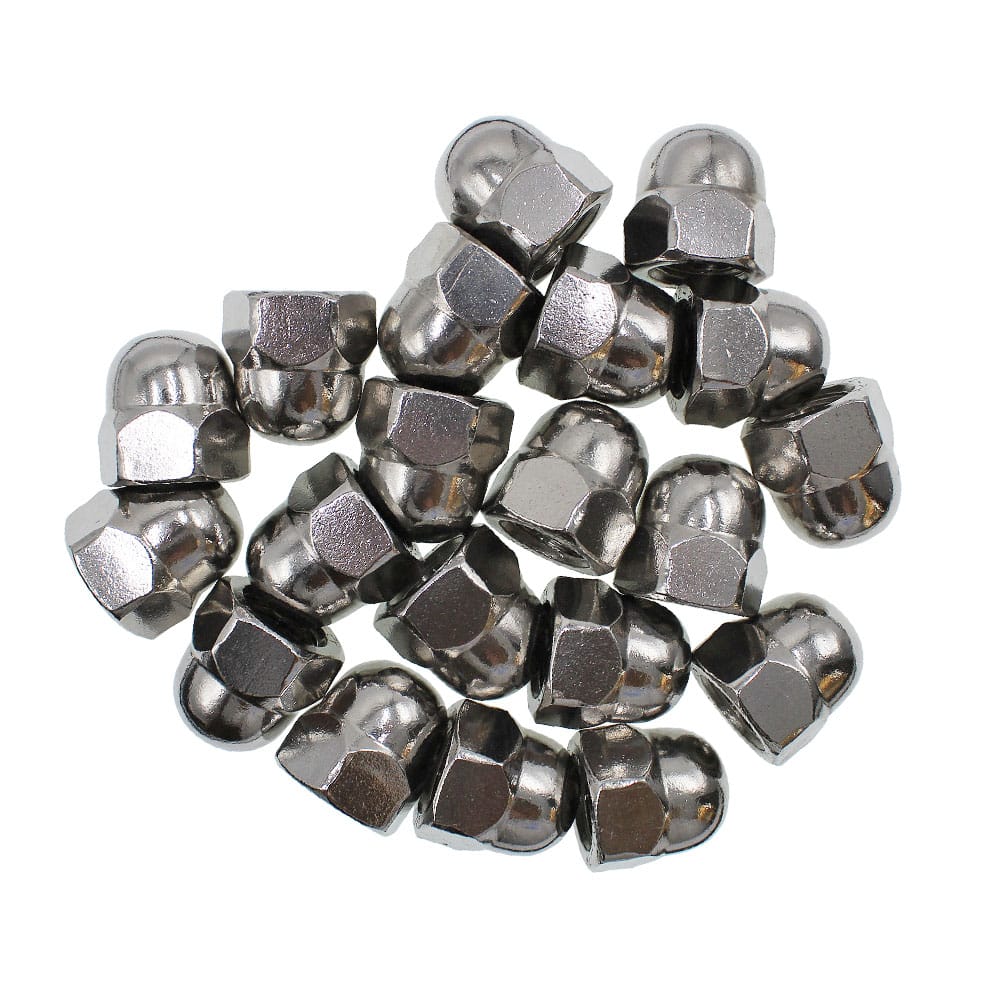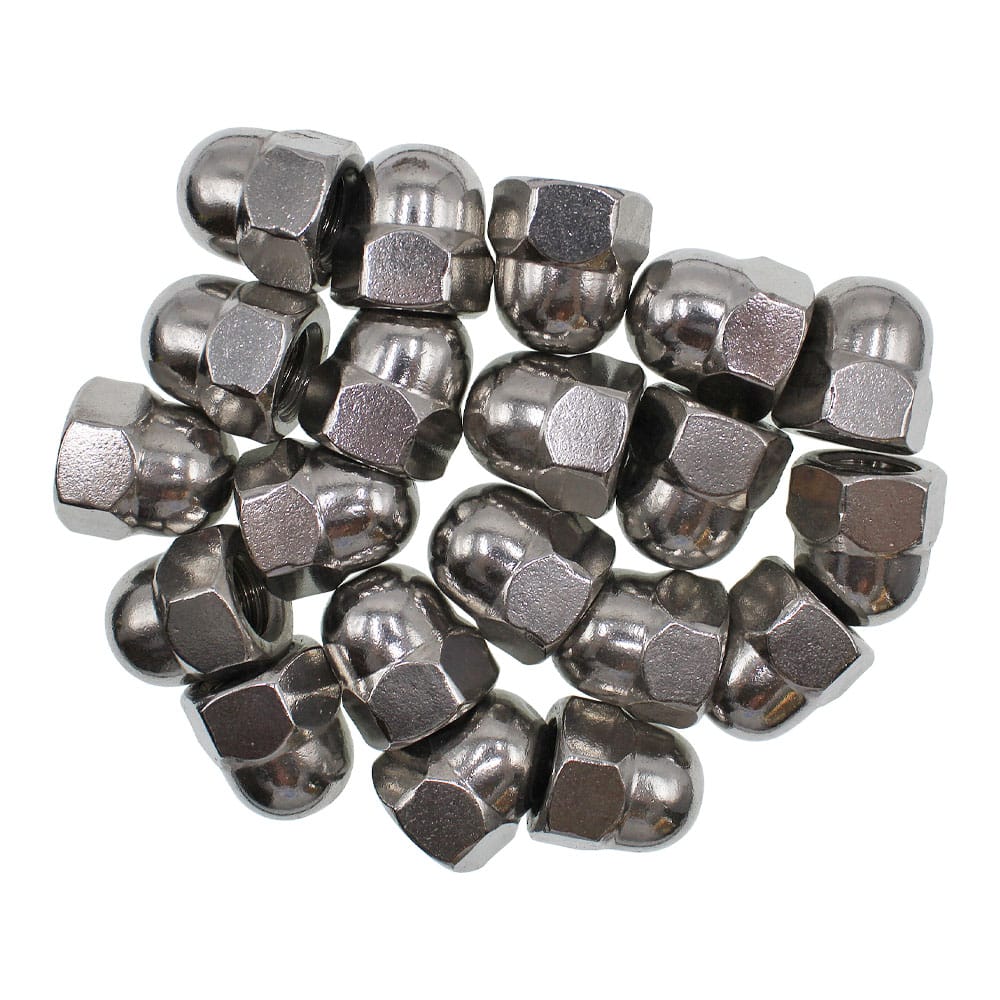- Massive Range
- FREE UK Delivery
- Rapid Dispatch
- Massive Range
- FREE UK Delivery
- Rapid Dispatch
- Massive Range
- FREE UK Delivery
- Rapid Dispatch
£0.99 – £9.89 inc VAT


This website is secured:
£ MULTIBUY SAVINGS – Order 3 For 10% Off
✔ Specialists In Rapid Shipments Of Any Size
✔ FREE UK Delivery Included
✔ Immediate Express Dispatch From Stock
✔ Tracked Delivery with Order Updates
✔ 30-Day Returns Accepted
@ ☏ Larger Pack Quantities Available
Are you looking for a reliable, multi-purpose nut for your next project? Look no further than the M4 Dome Nut Head Cup A2 Stainless Steel Nut from Speciality Metals! This nut is built to last, with its durable stainless steel construction and corrosion-resistant properties. Plus, its versatile design makes it suitable for a wide range of applications. You can rest easy knowing that this low-maintenance nut will keep your project secure and styled to perfection. Don’t compromise on quality – choose the M4 Dome Nut Head Cup A2 Stainless Steel Nut for your next project.

Top quality stainless steel m4 dome nut supplied straight from Warrington, UK.
The M4 Dome Nut Head Cup A2 Stainless Steel Nut 304 Grade from Speciality Metals is a highly durable, corrosion-resistant, and secure nut that requires little maintenance. A2 stainless steel is known for its strength and durability, making this dome nut ideal for a wide range of applications. Even in harsh environments, it will last for a long time. The nut is specially designed to offer maximum security, so it is ideal for applications that require a high degree of safety. Speciality Metals’ M4 Dome Nut head Cup A2 Stainless Steel Nut 304 Grade is a great choice if you’re looking for a reliable nut.
Standard nuts are not as aesthetically pleasing as dome nuts.
Key product details:
Speciality Metals are the best suppliers for you because:
Speciality Metals is a trusted UK based distributor of fasteners, sheet metal, flat bar and round tube. We specialise in rapid delivery to any location around the country. Our team of experienced, friendly staff are at hand at all times to process your order.
A Stainless Steel 304 Grade Dome Nut is a type of fastener made from 304-grade stainless steel, known for its corrosion resistance and durability. It features a domed top that covers the end of a threaded bolt, providing both an aesthetic finish and a level of safety. These nuts are commonly used in architectural applications, machinery, automotive parts and DIY projects.
Handrails and Balustrades: These dome nuts are often used in stainless steel railings for staircases, balconies and decks. The aesthetic appeal and corrosion resistance of 304-grade stainless steel make it a popular choice for these applications.
Decorative Fixtures: Stainless steel dome nuts can be used in various architectural elements like lighting fixtures or display structures for their sleek appearance.
Industrial Equipment: In machinery that is exposed to water or humid environments, the corrosion resistance of 304-grade stainless steel is beneficial. For example, it can be used in food processing machines, pharmaceutical equipment and chemical processing plants.
Outdoor Installations: In equipment that will be located outdoors, the weather resistance of these dome nuts helps to prolong the life of the machinery.
Engine Parts: In some cases, these dome nuts can be used in automotive engines, especially for non-critical parts where high levels of corrosion resistance are not required.
Body and Frame: Used in non-load-bearing sections for a cleaner finish.
Home Improvements: These nuts are often used in DIY furniture, shelving, or other home projects. Their corrosion resistance makes them ideal for use in bathrooms, kitchens or outdoor furniture.
Garden Structures: For structures like pergolas or garden arches, the corrosion resistance of 304 stainless steel is usually sufficient.
Boat Fixtures: These nuts can be used in various boat fixtures, although for saltwater applications, a higher grade like 316 is generally recommended.
Dock Construction: For freshwater docks, the corrosion resistance of 304-grade stainless steel can be sufficient, making these dome nuts a good choice.
Stainless Steel 304 dome nuts are generally considered to be non-magnetic in their annealed condition. The structure of 304 stainless steel is austenitic, which means it is comprised mainly of a face-centered cubic structure. This austenitic structure makes it non-magnetic.
However, it’s worth noting that cold-working processes like bending, hammering or drawing can introduce some degree of magnetism into the material. This happens because the mechanical deformation can partially transform the austenitic structure into a martensitic or ferritic structure, both of which can exhibit magnetic properties.
So, while 304-grade stainless steel is generally non-magnetic, there could be instances where slight magnetism is observed, particularly if the material has been mechanically stressed or deformed. Always check with the manufacturer if magnetic properties are a critical aspect of your application.
The torque specification for Stainless Steel 304 dome nuts can vary depending on various factors such as the size of the nut, the type of load it will bear, and the specific application it’s being used for. Generally, torque specs are provided by the manufacturer and should be adhered to for optimal performance and safety.
It’s crucial to note that stainless steel can be prone to a phenomenon known as “galling” or “cold welding,” where the threads of the nut and bolt may fuse under high pressure. Because of this, it’s often advised to use a lubricant when installing stainless steel fasteners.
Torque values are often provided in units like foot-pounds (ft-lbs) or Newton-meters (N·m) and will differ based on the diameter and thread pitch of the bolt or screw being used. For critical applications, it’s crucial to consult the manufacturer’s data or a qualified engineer to determine the appropriate torque specifications.
If a torque specification is not provided, it is highly recommended to consult with a qualified engineer or the hardware manufacturer to ensure that the fastener will perform safely and effectively in its intended application.
Prepare the Surface: Ensure that the surfaces where the dome nut will be placed are clean and free from dirt, rust or any other obstructions that may affect the tightening or performance.
Check Compatibility: Verify that the bolt or threaded rod you’re using is compatible with the dome nut in terms of thread size, type and grade.
Apply Lubricant: Because stainless steel has a tendency to gall, applying a small amount of lubricant or anti-seize compound to the threads is often recommended. This step is optional but can help prevent seizing and make installation smoother.
Hand-Tightening: Place the dome nut onto the bolt or threaded rod and turn it clockwise by hand until it’s snug. Make sure the dome part of the nut is facing outward, away from the material being fastened.
Wrench Tightening: Use a wrench or socket to continue tightening the dome nut. Make sure to apply even pressure and avoid over-tightening, which can strip the threads or cause galling.
Torque to Specification: If a specific torque value is required, use a calibrated torque wrench to tighten the dome nut to the manufacturer’s specifications.
Check Alignment: Ensure that the nut is seated properly and that the assembly is aligned correctly.
Final Inspection: After the nut is securely tightened, inspect the installation to make sure it is secure and meets the requirements of your application.
Retighten if Necessary: Some applications may require a “break-in” period after which it might be necessary to retighten the dome nut to the specified torque value.
Check out our blogs discussing A2 stainless steel dome nuts. It will prove a useful read to help you to make an informed decision on which material would work best for you.
We are also very proud of our ever expanding YouTube channel.
Our goal for our blogs, videos and help guides is to answer as many questions as possible to help to explain the possibilities of mesh to our customers. Contact us today if you have any questions at all. We are always really keen to help in any way that we can.
We are also very proud of our highly popular eBay store, check us out there too.
Thank you for checking out our product.


Speciality Metals
Unit 1, Farrell Street, Warrington,
Cheshire, WA1 2WW, United Kingdom
Quick Links
Payment Options
